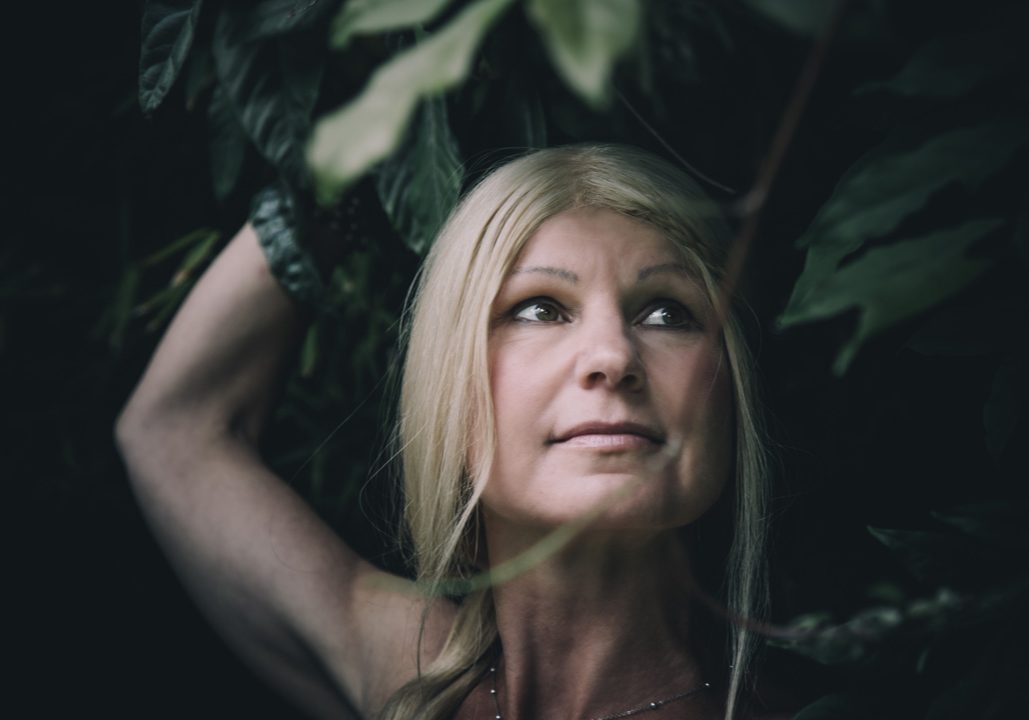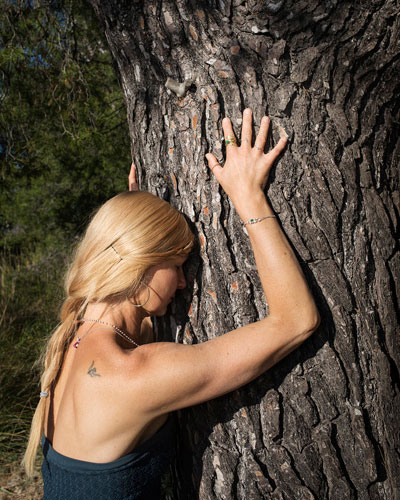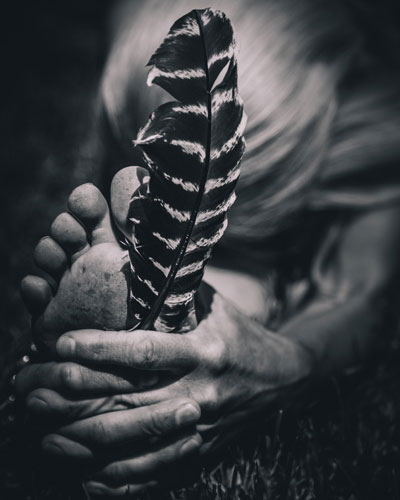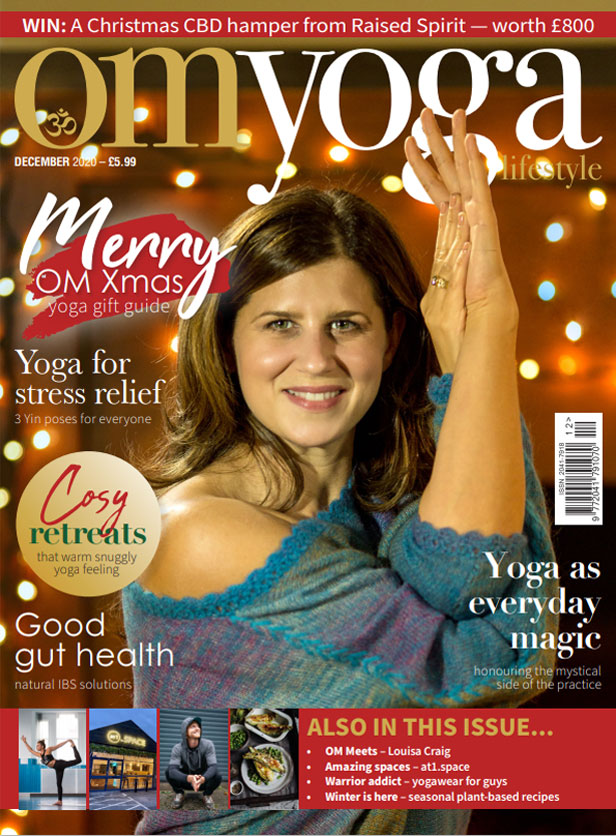
Yoga As Magic
Honouring yoga as everyday magic: David Holzer explores yoga’s links to shamanism and the more mysterious, esoteric side of the practice
I roll out my faded purple travelling yoga mat on the uncarpeted hotel floor and begin my practice in extended child's pose as I always do. As my lower back and knees click, I tell myself that I am doing my morning practice because I need to stretch out my back, open my hips, energise my core and loosen my hamstrings. But, really, I'm performing a ritual, a magic ritual.
My ritual is as much magical as it is physical because I’m not just preparing my body.
I subscribe to Aleister Crowley's definition of magic, which he spelt with an added K to distinguish it from staged trickery. He called magick “the art and science of causing change in accordance with your will”. Crowley meant ‘will’ as the essence of who we are, not an attempt to discipline our monkey mind.
Tuning into my will as I practice will change how the day ahead of me unfolds.
Crowley was a student of yoga. The first half of his Book Four (1913) was, according to yoga scholar Susan Newcombe, “a rendering of Patanjali’s Yogasutra with some techniques related to asana and praṇayama”.
In 2020, many of us are beginning to look differently at our asana-based practice. Perhaps we're getting older and losing interest in contorting our bodies into asanas like firefly. We may even have injured ourselves and simply be in no position to get into a forearm-stand scorpion anymore. Or we might be turned off by the growing take on yoga as simply exercise with a little woowoo wafted in.
Coming at it from a different angle, we could have owned up to the fact that the whole quasi-Hindu or ‘Zenny’ bit means zero to us. We dig the turquoise mala beads wrapped round our wrists, old Ganesh eyeing us up and all those Buddhas. But, although we love, respect and benefit from the metaphysical element of our practice, we don't really feel a profound connection with the wisdom of the East.
Whatever the reason, we're rediscovering the magical aspect of yoga or, as in my case, acknowledging it and its power properly for the first time.

So how is yoga magical?
I can’t think of a single yoga shala I’ve practiced in that doesn’t have some sort of shrine, including lit candles and incense, behind where the teacher sits. Even if there isn’t a shrine, the very fact that the teacher is most often sat cross-legged on a mat inevitably makes a class feel like a ritual.
An aspect of magical ritual is to perform a set of actions in the hope that they will have the desired outcome. This is no different to Ashtanga or Bikram Yoga, where the same sequence is performed every time in a dedicated space.
Modern yoga scholar Dr. Elizabeth De Michelis has pointed out that the three stages of any yoga class follow the structure of a healing ritual. It happens in three parts: arriving and centring ourselves on the mat, practicing a sequence and final relaxation, where we receive the benefits of our practice. If you’ve ever experienced healing, you’ll instantly see what she means.
Putting the physical aspect of yoga to one side, many of us practice to change our consciousness.
Today, although we might describe this as arriving at a state of relaxation rather than connecting to the divine or the universe, the principal is the same. We use the sequence we practice to connect, and we’re uncomfortable if we don’t do it the same way every time. Ever feel weird when you forget to perform an asana on both sides of your body? I’d say this is more than physical. You haven’t carried out the steps of your practice in the correct order to achieve the result you want – just as with a magic ritual.
As I said, it’s only just dawned on me that yoga is magic. But there’s a growing number of yogis journeying deeply into the magical aspect of yoga. One of these is my teacher Sandra Wijkman Donovan. Sandra, who founded the fantastic Earth Yoga studio in Palma de Mallorca, is a Swedish yogi who also teaches in Stockholm and runs retreats. She is currently developing a form of yoga that consciously incorporates elements of shamanism.
Sandra, yoga and the path of the shaman
One of the triggers for me recognising that yoga is magic was reading yoga scholar Susan Newcombe’s illuminating ‘Magic and Yoga: The Role of Subcultures in Transcultural Exchange’. To get more of a sense of living yoga as magic, I spoke to Sandra Wijkman Donovan about her continuing journey into shamanism. Here’s what she had to say:
Why do you believe yoga is magic?
A few years back I heard the amazing yogi Danny Paradise say that “Yoga is where the ordinary world meets the extraordinary world.” Through breath, movement and a deep sense of connection, we’re transported beyond space and time. We enter our inner world which, of course, is full of magic.
How do you define magic?
I’d say it’s impossible to define magic. But, for me, it’s when life is somehow intensified, and we get to experience ourselves and our connection to all that is breathing, living and moving in a very holistic way.
Why do you feel it’s important that yoga is a magical practice?
In our society we’ve long forgotten our connection to nature, spirit and all living things. Yoga invites us to find stillness and connection in a safe place. A yoga shala usually incorporates candles, essential oils, incense and creates a space to remove the masks that society often makes us wear. I feel it’s so important our yoga practice doesn’t simply become linear and alignment obsessed – although this is important - but also invites yogis and yoginis to open our hearts to a world invisible to the eye and only sensed.
We should remember that yoga asanas were traditionally named by mystics who’d contemplated natural energy manifested in animals. Breath work was all about connecting us to a deeper sense of self that was also the universe inside and around us. Many of us are longing to return to a world where we acknowledge and feel this connection.
How would you describe a shaman?
A shaman literally means the one who runs with the shadows. A shaman is in the world of all living things and what we see with the naked eye as well as the invisible world of spirit and magic. Shamans know everything has a spirit. We believe if we become ill it’s because the soul or part of it has left the body. Soul retrieval is healing by bringing the soul back to the body.
Unlike yoga, where we sometimes refuse to acknowledge that there’s darkness as well as light in the world and, instead talk about ‘Love and light’ and ‘Light beings’, shamanism accepts that we need light and dark.
Why did you pursue that path of the shaman?
I’d been practicing yoga for over 15 years and was longing for a teaching that brought me even closer to nature and took me beyond alignment and postures. I needed to learn more about the native people who came before us and from those who are still here, deeply rooted to their practices and deep awareness of nature. I wanted to learn more about herbs, plants and the magic of drum journeys. I’ve also always felt deeply connected to the Native Americans and especially South Dakota where the Lakota and Sioux lived. I resonate with a way of living where Mama Nature or Pacha Mama is God, where people pray to the trees and the wind and seek solace through vision quests and going off into nature to find wisdom and listen to the voice of spirit.
What training does one do to become a shaman today?
Shamanism is taught purely through experience, drum travelling and diving into your soul.

To truly learn, you must be willing to look deep inside and accept that healing yourself first will make you better able to heal the planet. I learned from an amazing couple who have a place called Gaia Life on the south-west coast of Sweden. They’ve danced with shamanism and spirit their whole lives, including studying with and learning from shamans in Peru. If you’re really interested in shamanism, you could start by checking out amazing teachers like The Four Winds or Sandra Ingerman.
How do you bring shamanism into your yoga practice and your world?
Generally, I try to be in more of a relationship with nature. I touch the trees, talk to the mountains and tell nature my fears, hopes and dreams. I believe my prayers are carried on the wind and nature hears me. I thank my ancestors and my spirit guides and call on my power animal and guides when I need support. I encourage my sons to be out in nature as much as possible and to be aware and respectful of where they are.
With my yoga, I’ve learned that it has much in common with shamanism. The yogic concept of ahimsa or non-violence is all about respecting every living being on the planet in the same way shamanism does.
Non-greed is a big part of yoga and shamans only ever use what they need. Yogis like me are always developing our consciousness, becoming kinder and living our commitment to making the world a better place.
I’m in the process of blending yoga and shamanism in a new way and I’ll be launching this soon. This involves bringing the essence of shamanism into my classes.
Find out more about Sandra Wijkman Donovan and her work at: shamayoga.org




